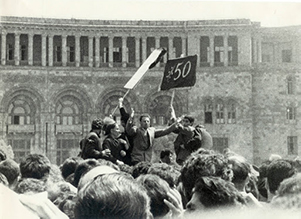
Suren Manukyan, head of the Department of Comparative Genocide Studies at the Armenian Genocide Museum-Institute participated in the international conference, called:
“Memory Studies meets Social Movement Studies– how collective/collected memories have shaped social movements in past and present”, which was organized by the Institute of Social Movements at Bochum Ruhr University.
The conference, which was to take place in Bochum in June 2020, was postponed due to the Covid-19 epidemic. And this year, taking into account the epidemic situation in Germany, it was decided to hold it online on July 18-19, 2021. The conference was an attempt to discuss the possibilities of interdisciplinary research in these two disciplines, to clarify the link between collective memory and "social movements". These two areas of research are just beginning to explore the possible interrelationships between them. Such examples include Dennis Boss book in 1871 on the Paris Commune memory, the book of Donatella Della Porta and co-authors, the movements of the memories and heritage, the book of Stefan Berger and Sean Scalmer, memory and social movements, as well as those Rigni project which is about social movements memories. These are successful projects that point to the connection between the two fields.
Memory studies have so far focused particularly on traumatic memory, which often merges with national histories, relating to the memories, of wars and genocides. However, in recent years there has been a change in the study of the memory of social movements, so the purpose of this conference was to discuss how social movements build and create memories of their own activities, how certain images of memory have influenced social movements, and how these movements use the memory as a cultural resource for the future of the movement to promote their own goals and aspirations.
The conference reports were divided into the following sessions: Memory of Environmental Movements, Memory of Urban և Rural Movements, Memory of Strikes և Revolutions, Memory of Women's Movements, Memory of Peace Movements and Memory of National Movements. In the last section, Suren Manukyan presented a report on
"The Memory of the Armenian Genocide in the Dissident Movement of Soviet Armenia." He analyzed the official ban on the memory of the Armenian Genocide during the Soviet years, the April 24, 1966 speeches against it, the history of the decision to establish the Armenian Genocide Memorial, the role of the Armenian Genocide Memorial for the Soviet Armenian dissident movement.
It is no coincidence that a group of patriots who were released after being arrested for their April 24, 1966 speeches initiated the formation of the underground United National Party. In addition, the topic of the Armenian Genocide was a constant part of the discussions, publications (leaflets, self-published newspapers) of these and other organizations and activities that later emerged. It was at Tsitsernakaberd that the underground organizations organized the swearing-in ceremonies of the new members, on April 24 the most sensational and attention-grabbing actions were carried out (illegal radio program at Tsitsernakaberd, distribution of leaflets, distribution of inscriptions in Yerevan). Even after imprisonment, the day retained its central role for members of the dissident movement. For example, Armenian exiles went on hunger strike in the camps every April 24.
The topic aroused great interest. It was mentioned that it is completely new for unknown European scientific circles. It was suggested to prepare an article based on the report, to publish it in the forthcoming collection.
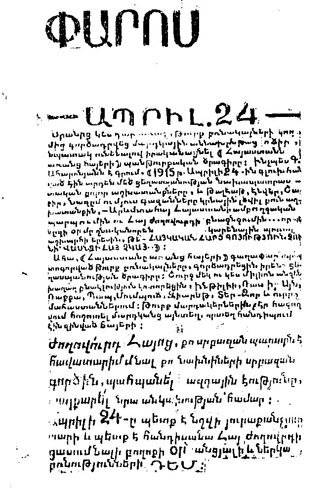 In April 1967, the first leaflet entitled “Paros” ("Lighthouse") distributed by the UNP on the occasion of the Armenian Genocide Day
In April 1967, the first leaflet entitled “Paros” ("Lighthouse") distributed by the UNP on the occasion of the Armenian Genocide Day
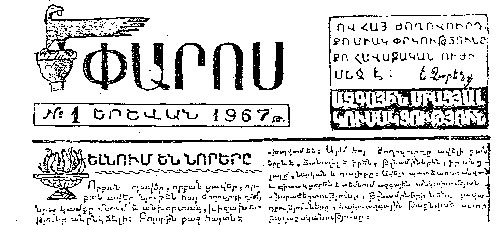 October 19, 1967 "Paros" (“Lighthouse”) newspaper
October 19, 1967 "Paros" (“Lighthouse”) newspaper
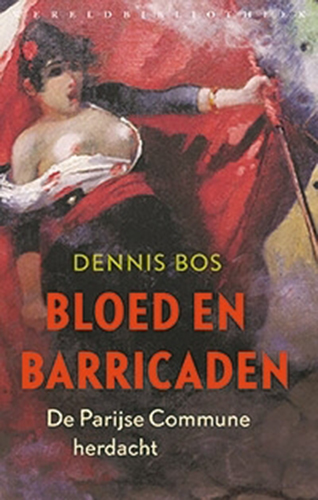 Dennis Boss's book on the memory of the Paris Commune in 1871
Dennis Boss's book on the memory of the Paris Commune in 1871
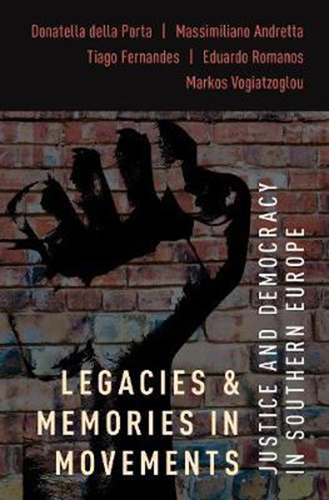 The book of Donatella Della Porta’s and co-authors on movement memories and heritage
The book of Donatella Della Porta’s and co-authors on movement memories and heritage
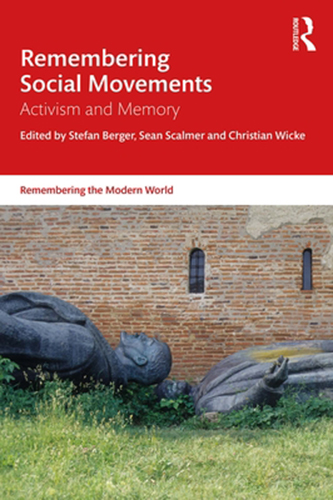 Stefan Berger և Sean Scalmer's book on memory and social movements
Stefan Berger և Sean Scalmer's book on memory and social movements





